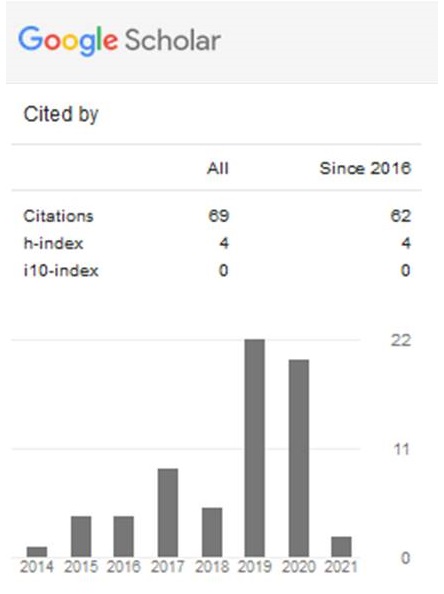The Effect of Different Levels and Sources of Auxin and Cytokinin to Callus Formation on Soybean Anther Culture
Abstract
growth and development of anthers of two soybean cultivars, Merubetiri and Wilis cultured in vitro. The trial was conducted
at the Plant Biotechnology Laboratory, Agricultural Faculty, University of Jambi. Anthers were cultured on MS solid
medium provided with IAA, 2,4-D or NAA as auxin source in combination with BAP or kinetin as cytokinin source. Each
growth regulators was tested at 0, 5, 10, 15 and 20 μM. The experiment was placed in a completely randomized design with
five replicates. Each replicates consisted of 8 to 10 anthers obtained from the same floral bud. Cultures were placed in a light
intensity of 50 μmol m-2.s-1 and 16-hour photoperiod at 25±1 oC. Observation was done weekly for 8 weeks of culture.
Results indicated that response showed by anthers cultured on medium supplemented with 2,4-D+BAP, IAA+BAP and
NAA+BAP, in the form of callus proliferation, occurred within 5-18 days of culture initiation. Meanwhile, with 2,4-D+kinetin,
IAA+kinetin and NAA+kinetin, callus proliferation took place within 4-16 days of culture initiation. Callus formation was
preceded by a swollen on the surface of anthers, followed by changing in color from light green to brownish. Following this,
anther wall turned into amorphous shape, before it was finally covered by a white, cream or light green callus mass. Initially,
the callus showed friable or compact structure, but following two weeks of proliferation all callus showed compact structure.
Among growth regulators tested, combination involving 2,4-D produced more callus than other combinations. In addition,
of the two cultivars tested, Merubetiri showed better response compared to Wilis.
Keywords
Full Text:
PDFRefbacks
- There are currently no refbacks.

_2017.jpg)



